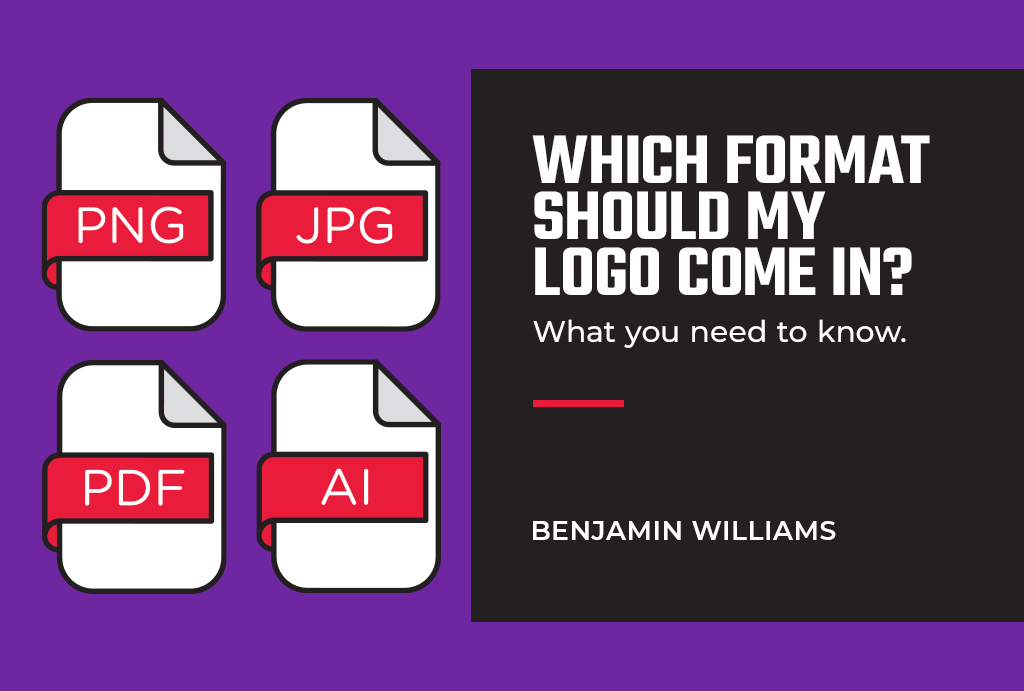Logo file formats can be confusing to everyone but logo designers themselves. If you’re already on a graphic design subscription, then your logo designer will have already known all this by heart. However, as the end-user of the logo, knowing your file formats will allow you to use the logo assets properly in any application.
This article will briefly discuss the different file formats that graphic designers use for logo design. We will also go through the best applications for these file formats to differentiate them from each other.
What’s the difference between a raster and a vector image format?
Before discussing the individual file formats, it’s essential to grasp what raster and vectors mean.
Raster graphics are image formats that are composed of individual colour pixels. The image resolution depends on how many of these image pixels are present in the image, which helps display more complicated shades and hues. Take note, however, that raster images have a technical limit for scalability, which means that even the highest resolution images will lose information if you stretch it far enough with software.
Vector images, by contrast, are graphic images that are defined in terms of points, lines, and curves that are based on mathematical equations. Because pixel count does not limit them, vector graphics’ lines will remain sharp no matter how large or small or how close you zoom in on the image.
What are the different file formats that graphic designers use in logo design?
Discussing file formats can be technical for the average user. However, it’s essential to be familiar with these basic terms:
JPG
Also commonly referred to as JPEG, JPG is among the most common type of raster image file format in use today. Graphic designers refer to JPG as a “lossy” file format, which is a technical term meaning that the image loses some information to lower its file size.
JPGs will retain most of the image’s true tonal qualities during compression. However, it will lose information each time you open the file and manipulate it with software.
These are commonly used in digital photography because they handle complex colour information well. However, they do not take graphics and textual information particularly well.
PNG
The PNG file format is a lossless compressed raster graphic format, which means that it retains much of its original information even after manipulation. PNGs also retain background transparency, instead of turning it into a specific colour, making it better for logo design and graphics work.
These typically have a larger size than JPGs, and generally look inferior to JPGs on print. However, they do well for transferring images on the internet and are favoured by graphic designers.
AI
The AI file format is a proprietary format used by Adobe Illustrator, a vector graphics editor developed and marketed by Adobe. If you’re working with a professional graphic designer, he or she is most probably using Adobe Illustrator. Keeping your logo’s AI file safe is essential if you want to make future modifications to the logo.
SVG
SVG is an open-sourced vector graphic file format best used for animations and graphics on the internet. SVGs can be opened and edited with vector graphics editors like Adobe Illustrator. They are excellent for use in websites as they are defined in XML text files. Because they do not have pixel information, these retain their resolution no matter their size and are generally more lightweight than PNGs.
What logo file formats should I use?
If you’re designing a brochure, calling card, or anything that needs to be printed on a piece of paper, you’ll want to use the AI or SVG format, since they retain the highest quality as vector files. If you’re using a raster image editor such as Adobe Photoshop, you can use PNG.
Meanwhile, JPG, PNG, and SVG are best for using your logos on the web because web browsers recognise them. JPG and PNG work well for static images, while SVG is best for interactive elements and animations.
Conclusion
If you’re already working with a design on-demand agency such as 55 Knots, you need not worry about file formats. Your graphic designer will provide them all once the design is finished because the logo files are yours to use as you see fit.
However, knowing your file formats allows you to use your logos efficiently in whatever application. This will enable you to provide a consistent brand experience for your customers, and may even serve as a differentiator for potential counterfeit products.
55 Knots is a design subscription service in Australia. Our professional graphic designers can do everything, from business cards to landing pages, subject to unlimited revisions. Sign up today to get a 14-day money-back trial—no questions asked!

